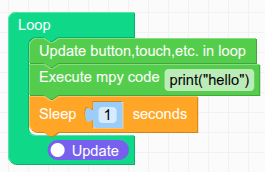Hello @BruderTom
the issue seems to be an I2C conflict. Internal I2C already uses Wire1; the PPS code initializes a second I2C instance (Wire) with the same GPIOs for SDA and SCL. The result is: both I2C instances (Wire and Wire1) fight against each other.
Try replacing below line so the correct Wire1 instance is used for PPS as well:
// while (!pps.begin(&Wire, M5.In_I2C.getSDA(), M5.In_I2C.getSCL(), MODULE_POWER_ADDR, 1000000U));
while (!pps.begin((M5.In_I2C.getPort() == I2C_NUM_1) ? &Wire1 : &Wire, M5.In_I2C.getSDA(), M5.In_I2C.getSCL(), MODULE_POWER_ADDR, 1000000U));
Thanks
Felix
